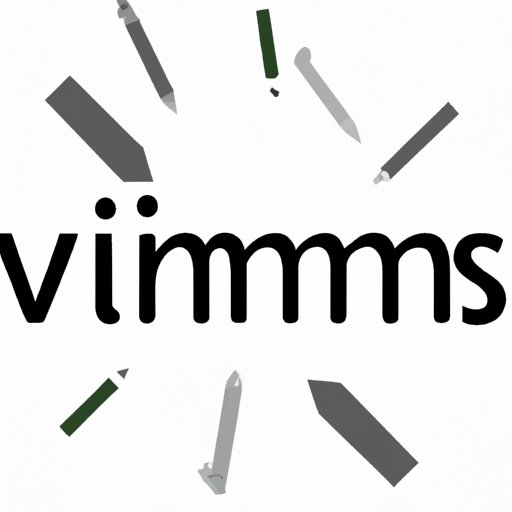
I. Introduction
Vim is a powerful text editor that can help you save time and be more efficient when editing text. Whether you are working on code or large documents, Vim provides a wide range of features and customization options that can make the editing process more streamlined and intuitive.
II. Beginner’s Guide to Vim
If you are new to Vim, it can be helpful to start with the basics. Vim is a modal text editor, which means that it has different modes for navigating and editing text. To get started, you need to open a file in Vim by typing “vim” followed by the file name in your terminal.
Once you open a file in Vim, you can use different commands to move around the file, make changes, and save your work. The most basic command is the “i” command, which allows you to insert text. To exit Vim, you can use the “:wq” command, which saves your changes and quits the editor.
III. Essential Vim Commands
Vim has a vast array of commands that can help you navigate and edit text more efficiently. Some of the essential commands include:
- Navigation commands, such as “h” (move left), “j” (move down), “k” (move up), and “l” (move right)
- Commands for moving between files, such as “:e” (open a new file), “:b” (switch between open files), and “:ls” (list open files)
- Commands for editing text, such as “x” (delete a character), “dd” (delete a line), and “yy” (copy a line)
IV. Customizing Vim
One of the greatest strengths of Vim is its flexibility and customizability. You can modify Vim’s settings to suit your preferences and work style, from changing the color scheme to adding new key bindings.
The Vim configuration is stored in a file called “.vimrc” in your home directory. You can use this file to set options and define custom key bindings. Some of the most useful Vim configurations include:
- Setting line numbers to make it easier to navigate through long documents
- Enabling syntax highlighting to make code easier to read
- Customizing the behavior of the backspace key to make it more intuitive
V. Time-Saving Strategies
Vim provides several features that can help you save time and increase your productivity when editing text. One of the most powerful features is Vim macros, which allow you to automate repetitive tasks.
A Vim macro is a sequence of commands that can be recorded and then played back to repeat the same task. For example, you can record a macro to delete a line, move the cursor to the beginning of the next line, insert a new line, and then paste the deleted line. Once the macro is recorded, you can play it back as many times as needed with a single keystroke.
VI. Essential Vim Add-ons
Vim has a vibrant community of users who have developed plugins to extend the editor’s functionality. Some of the most popular Vim plugins include:
- NerdTree, which provides a tree-style file explorer
- CtrlP, which allows you to quickly search for and open files
- Ack, which provides a fast and intuitive search tool
Plugins can be installed using Vim’s built-in package manager or a plugin manager like Vundle or Pathogen. Once installed, plugins can be activated and customized in the .vimrc file.
VII. Collaborative Editing with Vim
Vim’s modal editing interface can make it challenging to use for collaborative editing. However, Vim provides several useful features that can make it easier to collaborate with others on text documents.
The most basic collaborative feature is the ability to open multiple windows or tabs in the editor. You can use these windows or tabs to view different parts of the same document or to switch between multiple documents.
Vim also provides integration with version control systems like Git, which allow multiple users to work on the same set of files without interfering with each other’s changes.
VIII. Learning Vim on a Budget
Learning Vim can be a bit daunting at first, but there are many free online resources and communities that can help you get started. Some of the best resources include:
- The Vim documentation, which provides a comprehensive overview of Vim’s features and commands
- Online tutorials and courses, such as Vim Adventures and Learn Vim
- Vim-related forums and communities, such as /r/vim on Reddit and the Vim Tips Wiki
IX. Conclusion
Vim is a powerful and versatile tool that can help you save time and be more efficient when editing text. Whether you are a beginner or a seasoned Vim user, there are many features and customization options that can help you streamline your work and get more done.
To get the most out of Vim, it’s important to spend some time learning the essential commands, customizing the editor to suit your preferences, and exploring some of the many plugins and time-saving features. With a bit of practice and experimentation, you can become a master of efficient text editing with Vim.




